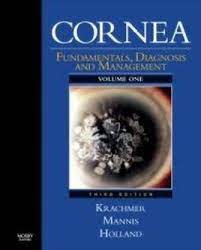Prevalence of keratoconus in a population-based study in Shahroud
Authors
Affiliations
- *Noor Ophthalmology Research Center, Noor Eye Hospital, Tehran, Iran; †Farabi Eye Hospital, Tehran University of Medical Sciences, Tehran, Iran; ‡School of Public Health, Shahroud University of Medical Sciences, Shahroud, Iran; §Department of Community Medicine, School of Medicine, Tehran University of Medical Sciences, Tehran, Iran; and ¶Department of Epidemiology and Biostatistics, School of Public Health, Tehran University of Medical Sciences, Tehran, Iran.
Abstract
Purpose: To determine the prevalence of keratoconus in the 40- to 64-year-old population of Shahroud, Iran.
Methods: This study was done cross sectionally based on the data from the first phase of the Shahroud Eye Cohort Study. In this study, 6311 patients were selected using random cluster sampling, and 5190 patients (response rate = 82.2%) participated in the study. Here, the analysis was done on data pertaining to those whose topographic map (with Pentacam) had no errors. These patients were categorized as keratoconus, forme fruste keratoconus, and non-keratoconus.
Results: After applying the exclusion criteria, data from 4592 patients with a mean age of 50.83 ± 0.12 years were analyzed. Of these, 35 patients (0.76%) were diagnosed with keratoconus in at least 1 eye, and 47 patients (1.02%) were identified as having forme fruste keratoconus. The prevalence of keratoconus was 0.72% (95% confidence interval, 0.35-1.09) in men, and 0.79% (95% confidence interval, 0.43-1.15) in women (P = 0.793). The mean age of the keratoconic patients was 47.6, which was significantly lower than 50.9 of normal individuals (P < 0.001). The mean maximum keratometry and central corneal thickness in patients with keratoconus were 48.67 ± 3.6 diopters and 470 ± 29 μm, respectively. Keratoconus was associated with an 8.1 greater odds of visual impairment (P < 0.001). Conclusions: The prevalence of keratoconus in the Shahroud population is far higher than in western populations. Because of the high odds of visual impairment in this population, it can be a serious warning for the need to assess the prevalence and causes of keratoconus in the Middle Eastern region.
Keywords: Prevalence, Iran, Eye Cohort.

